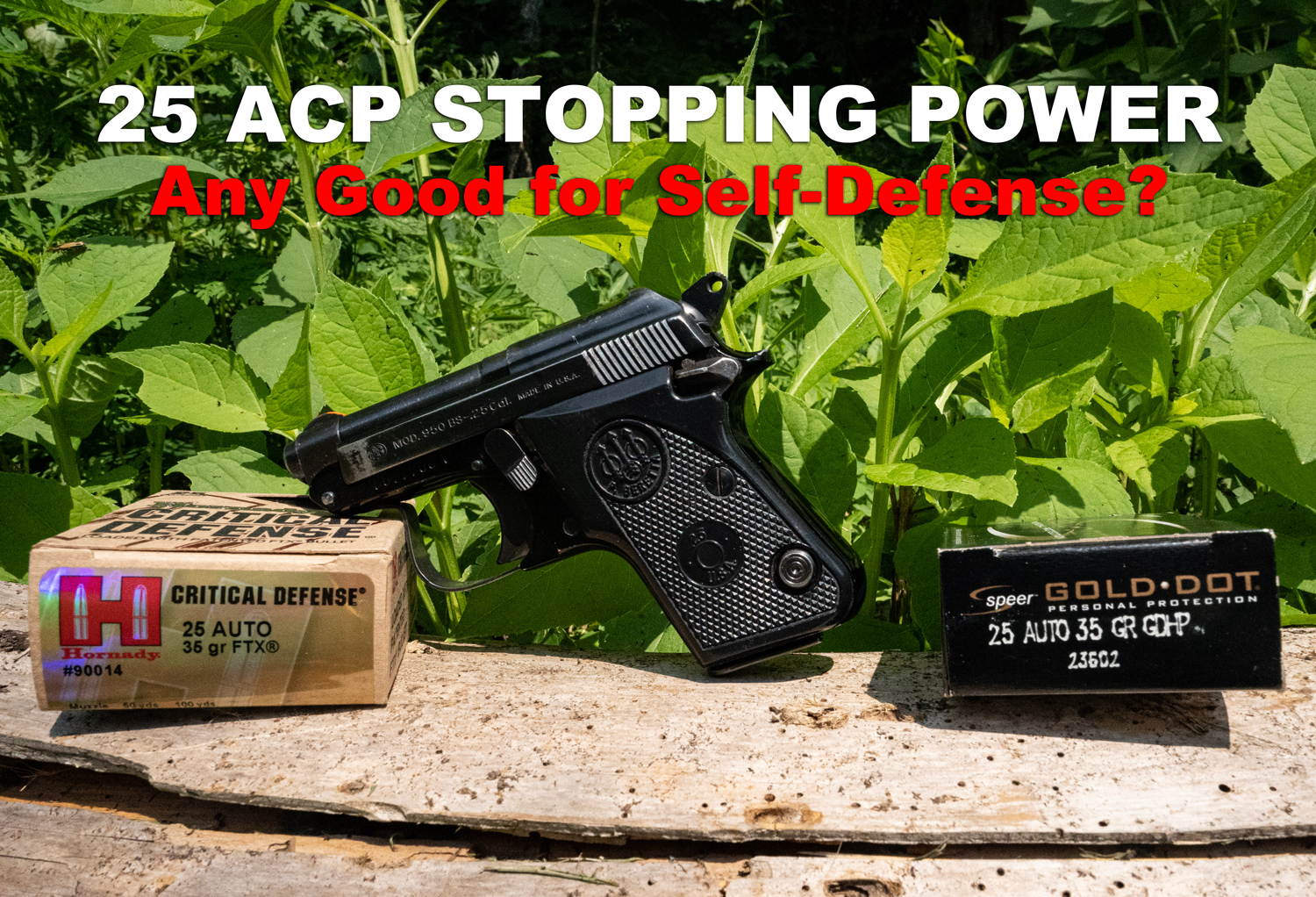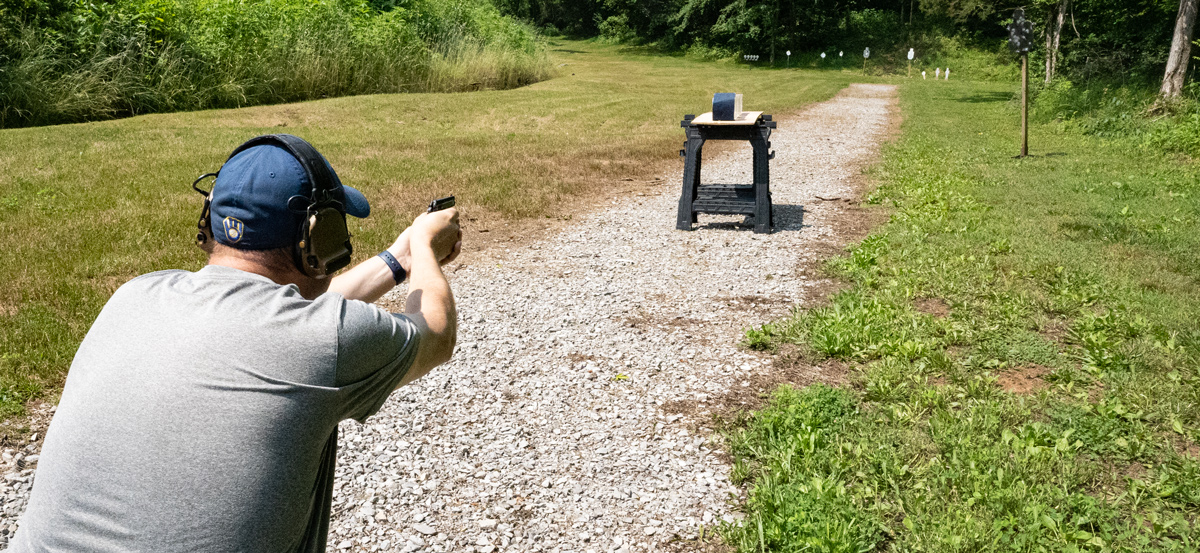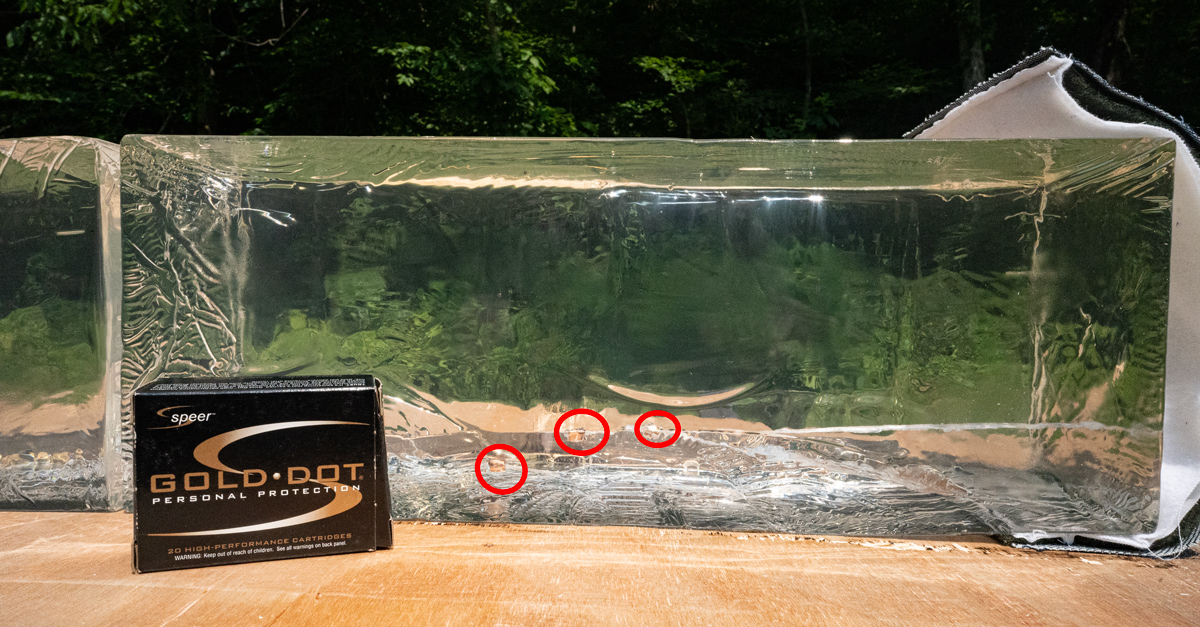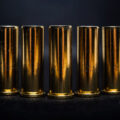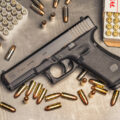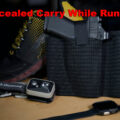A rigorous look at 25 ACP stopping power and whether the pocket pistol cartridge is a worthy choice for self-defense.
“Carry a .25 if it makes you feel better, but never load it. If you load it, you may shoot somebody, and they may become angry and do you a serious jury.”
– Lt. Col. Jeff Cooper
Lt. Col. Jeff Cooper was the creator of the modern technique of handgun shooting, among many other things. No one could give better advice about handguns than the lieutenant colonel, so when he ridicules the 25 ACP, you know right away something must be up with this cartridge.
No two ways about it: the 25 ACP has terrible stopping power. It delivers about half the muzzle energy of the tiny 22LR and less than 20% of what most 9mm ammo will give you.
Practically speaking, virtually every other handgun cartridge is preferable for self-defense over the 25 ACP. (You could argue that the 25 ACP is better for everyday carry than the 500 S&W Magnum, which is on the polar opposite of the spectrum in terms of raw power. This would assume you’re not actually defending yourself against bears.)
But let’s see how the round performs with some ballistic gel testing before we begin judging it. From there, we’ll dive into why you might carry the 25 ACP and the obvious reasons why you may elect not to. Puniness does come with some benefits!
Testing 25 ACP for Self-Defense
Of course, the ballistic data is great and offers us a clue what to expect if we were to rely on 25 ACP for self-defense. But, what does the round actually deliver into a target?
To find out, we lined up a couple popular self-defense loads (Speer Gold Dot and Hornady Critical Defense) with some synthetic gel blocks and a four-layer cloth barrier that is similar to the FBI’s ammo testing procedure.
From 10 yards away, we fired a handful of rounds through the fabric and through the gel in a Beretta 950 BS pocket pistol. (2.4″ barrel.)
Gold Dot 25 ACP Gel Test Result
Our 25 ACP Speer Gold Dot 35 grain rounds fell just shy of the FBI’s 12-18″ penetration standard. As you can see, at best, the best of the rounds penetrated about 10″ into the gelatin.
When it comes to expansion, there was really none to speak of from these bullets.
Hornady Critical Defense 25 ACP Test Result
Hornady’s 35 grain Critical Defense 25 ACP ammo performed better than the Gold Dots if you subscribe to the FBI’s protocol but the performance still wasn’t too inspiring.
The rounds penetrated as far as about 11″ and really didn’t produce any expansion. So, any wound channel into a threat would be somewhat minimal.
We don’t mean to beat a dead horse here but… there are a number of loads available in 380 ACP and 9mm that consistently outperform these 25 ACP loads for self-defense and stopping power. If you need something easily concealable as a backup gun, fine. Go with a 25 ACP but you need to be aware of the limitations of what you’re carrying.
Advantages of the 25 ACP
Pro: Small
The 25 ACP may be weak by design, but that does work partially to its advantage. It’s so tiny a cartridge will not blow a very small handgun to smithereens when it is fired.
Subcompact handguns make it easier to carry discreetly. James Bond himself used to slip a 25 ACP Beretta into his tuxedo before he upgraded to a 32 ACP Walther in Dr. No. Plenty of card players over the years kept 25 ACP pistols in their vest pockets as well.
Pro: Low Recoil
A small-caliber handgun will deliver extremely little recoil. People with lighter builds may have difficulty firing larger calibers in rapid succession, only to find that shooting becomes manageable when they switch down to a smaller round like the 25 ACP.
Pro: Centerfire Primer
When discussing the stopping power of the 25 ACP, people often point out that the cheaper 22 LR deals similar damage. This is true. For that matter, a 22 LR rifle may boast even greater stopping power than a 25 ACP pistol!
But the 22 LR’s rimfire primer does make it less reliable than a centerfire round like the 25 ACP. This is important to consider while selecting a handgun you might use for self-defense. Failures to fire are not advantageous during a life-or-death altercation.
Pro: Can Actually Work For Self-Defense
For all the bad things you can say about the 25 ACP, you can’t argue that it’s completely incapable of stopping a threat quickly. The 25 ACP’s FMJ bullet can in fact penetrate a human body completely, and even the smallest bullet may put a fast end to an attacker’s plans if it pierces their heart or their skull. We’ll dive into some 25 ACP for self-defense testing a little bit later in this article.
Disadvantages of the 25 ACP

We’ve been generous to the 25 ACP for long enough. Now let’s focus on why you probably shouldn’t count on it for self-defense: terrible stopping power.
The anemic 25 ACP transfers relatively little kinetic energy to its target. Low energy means very little hydrostatic shock after impact. The slow, lightweight bullet also has a lower chance of penetrating deeply enough to do much damage. If the bullet encounters a barrier like heavy clothing or bone – or the threat has a robust build – then the bullet can easily stop short of striking a vital organ.
Furthermore, the 25 ACP bullet has a small diameter at 0.251” – about one-tenth of an inch narrower than the 9mm. As the result it creates a smaller wound cavity, which isn’t helped by a low-velocity bullet’s tendency not to expand (even if it has got a hollow point).
Just how weak is the 25 ACP? On average, its muzzle energy comes out to a meager 64 ft lbs. For reference, the minimum amount of impact energy usually recommended for self-defense falls between 220 and 300 ft lbs. The 25 ACP thus delivers about one-quarter of the recommended energy for self-defense – and that’s assuming the handgun is fired mere inches from its target.
| 25 ACP Ammo | Muzzle Velocity (fps) | Muzzle Energy (ft lbs) |
|---|---|---|
| PMC 50gr FMJ | 750 | 62 |
| Hornady 35gr JHP | 900 | 63 |
| Speer 35gr JHP | 900 | 63 |
| Fiocchi 35gr JHP | 900 | 63 |
| Hornady 35gr JHP | 900 | 63 |
| Magtech 50gr FMJ | 760 | 64 |
| Federal 50gr FMJ | 760 | 64 |
| Remington 50gr FMJ | 760 | 64 |
| Winchester 50gr FMJ | 760 | 64 |
| Prvi Partizan 50gr FMJ | 770 | 66 |
| Winchester 45gr Expanding Point | 815 | 66 |
| Sellier & Bellot 50gr FMJ | 781 | 68 |
The 25 ACP’s impotence becomes more obvious when compared to other cartridges. Here is a round that does about half the damage of a 32 ACP, which itself is often considered too weak for self-defense applications. It is only about 20% as powerful as the 9mm, which is the most popular handgun round in America. The 25 ACP is roughly one eighth as powerful as the 357 Magnum!
| Other Ammo | Muzzle Velocity (fps) | Muzzle Energy (ft lbs) |
|---|---|---|
| 22 LR CCI 40gr LRN | 1070 | 102 |
| 32 ACP Federal 71gr FMJ | 900 | 128 |
| 38 Special Remington 148gr WC | 710 | 166 |
| 380 ACP Remington 95gr FMJ | 955 | 192 |
| 9mm Hornady 115gr JHP | 1135 | 332 |
| 40 S&W Federal 180gr FMJ | 1000 | 400 |
| 45 ACP Federal 230gr FMJ | 890 | 404 |
| 10mm Remington 180gr FMJ | 1150 | 529 |
| 357 Mag Federal 158gr JSP | 1240 | 539 |
Takeaway: 25 ACP Stopping Power
The 25 ACP doesn’t come without its blessings. It lets you carry one of the smallest possible handguns, it kicks like a baby mouse, its centerfire primer makes it more reliable than a 22 LR, and, despite Lt. Col. Cooper’s somewhat comical advice, the 25 ACP has proven itself capable of neutralizing determined threats.
But the 25 ACP is also one of the weakest handgun cartridges in existence. Its low-powered bullet just cannot deal very much damage to soft tissue. It’s all well and good to plan on aiming for a vital area – an ideal strategy, regardless of which handgun you’re firing – but taking good aim is easier said than done during a high-stress situation. Like Lt. Col. Cooper suggests, a handgun with such little stopping power may give your attacker plenty of time to retaliate!
Our advice? Don’t go out and buy a 25 ACP handgun for self-defense. There are too many better alternatives, and significantly more stopping power is worth the trade-off of a slightly larger pistol. If you’re averse to recoil, try and overcome that through range training. You’ll surely find larger rounds more manageable through practice!
